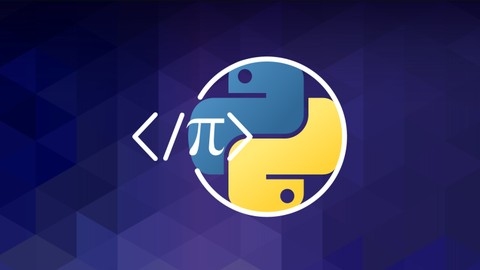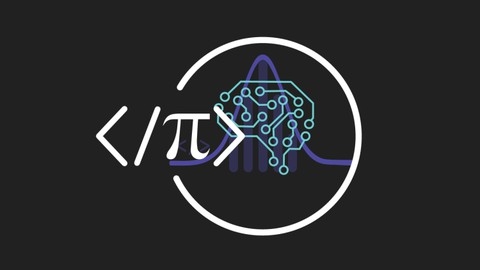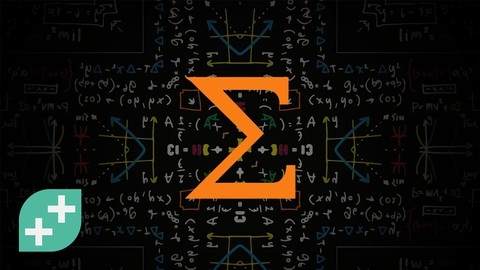Mathematics is the foundation of countless fields, from science and engineering to finance and technology.
A strong grasp of mathematical principles empowers you to solve complex problems, think critically, and make informed decisions.
Whether you’re aiming to pursue a STEM career, improve your analytical skills, or simply expand your knowledge, mastering fundamental math concepts is essential.
However, the sheer volume of math courses available online can be overwhelming.
You’re searching for a course that provides a clear and engaging learning experience, covers the essentials comprehensively, and sets you up for success in your mathematical endeavors.
Finding a course that strikes the right balance between theory and practice, while catering to your learning style, can be a real challenge.
That’s where our comprehensive review comes in.
We’ve analyzed numerous math courses on Udemy and identified Master the Fundamentals of Math as the best overall choice.
This course systematically guides you through core concepts, from basic arithmetic to more advanced topics like fractions, decimals, and exponents.
With clear explanations, practical examples, and plenty of practice problems, it’s an excellent choice for building a solid foundation in mathematics.
While Master the Fundamentals of Math is our top pick, there are several other outstanding courses that cater to specific needs and learning styles.
Let’s explore some other highly-rated options that might be the perfect fit for your mathematical journey.
Continue reading to discover our curated list of the best math courses on Udemy.
Master the Fundamentals of Math
“Master the Fundamentals of Math” is a comprehensive course designed to equip you with a solid foundation in essential mathematical concepts.
You’ll embark on a journey through the world of numbers, starting with the basics and gradually building towards more complex ideas.
Right from the start, you’ll delve into the fascinating realm of numbers, exploring negative numbers, different sets of numbers, and the concept of finding the opposite of a number.
You’ll also discover the importance of absolute value, which helps you understand the distance of a number from zero.
This understanding is crucial for working with positive and negative numbers.
The course then leads you through the fundamental operations of adding, subtracting, multiplying, and dividing signed numbers.
You’ll learn to confidently apply these operations with various types of numbers, including fractions, decimals, and exponents.
The section on fractions is particularly robust, guiding you through simplifying, adding, subtracting, multiplying, and dividing them.
You’ll also be introduced to mixed numbers, which combine whole numbers and fractions.
You’ll learn to convert between mixed numbers and improper fractions, mastering the essential techniques for handling these number formats.
The course delves into the world of decimals, explaining place value, performing arithmetic operations, and rounding decimals to the nearest digit.
You’ll also explore repeating decimals, understanding their unique characteristics.
The final stages of the course delve into exponents, radicals, and scientific notation.
You’ll learn to use exponents to represent repeated multiplication, and to work with radical expressions, involving finding the roots of numbers.
Scientific notation becomes a powerful tool for expressing large or small numbers in a concise way.
This course provides a strong foundation in math fundamentals, preparing you for more advanced mathematical concepts.
The syllabus includes a wealth of practice problems and quizzes to solidify your understanding.
You’ll also have access to video explanations designed to clarify challenging topics.
Complete High Speed Vedic Math Course
Imagine effortlessly calculating 998 x 997 or instantly finding the exact value of 1/19 – these are just a taste of the skills you’ll master.
The course takes a comprehensive approach, guiding you through a range of topics.
You’ll start by understanding the foundational principles of high-speed mental math and exploring how Vedic Math methods can dramatically improve your calculation abilities.
The syllabus delves into specific techniques like squaring numbers ending in 5, multiplying numbers between 11 and 19, and mastering the powerful “Base Method” for multiplication.
You’ll learn the Vertically & Crosswise method, which offers a unique approach to multiplication, and delve into the world of fractions and special multiplication techniques.
The course also covers the art of doubling and halving, providing you with mental shortcuts for various calculations.
Moving beyond multiplication, you’ll explore faster addition, subtraction, and division techniques.
You’ll learn the Trachtenberg’s method for high-speed columnar addition, a technique often praised for its efficiency.
The syllabus then delves into the realms of squares, square roots, cubes, and cube roots, equipping you with methods for calculating these values with ease.
You’ll also gain a deeper understanding of divisibility and its practical applications.
The course doesn’t stop at basic arithmetic.
You’ll explore advanced concepts like the Pythagoras theorem, calendars, and algebra, covering topics like Highest Common Factor, Linear Equations, Simultaneous Equations, and Quadratic Equations.
But perhaps the most intriguing element is the “Math Meditation” component.
This unique method encourages you to harness time distortion and visualization to enhance your mental calculation abilities, taking your mathematical skills to a new level.
By embracing the techniques presented in this course, you’ll gain a powerful toolset for tackling complex calculations with speed and accuracy.
Discrete Mathematics
You’ll start by exploring sets, which are the building blocks of many advanced concepts.
The course covers set operations like union and intersection, as well as set properties and Venn diagrams for visualizing relationships.
Next up is logic, a crucial tool for analyzing programs and designing circuits.
You’ll learn about statements, truth tables, logical equivalences, and conditional statements.
The section on digital logic circuits introduces concepts like Boolean expressions and gate operations like NAND and NOR.
Number theory dives into the properties of integers, including divisibility, prime numbers, and methods for finding the greatest common divisor (GCD) and least common multiple (LCM).
This leads into an extensive look at proofs, covering direct proofs, proof by contrapositive, induction, and more.
Functions are explored in-depth, from evaluating and graphing to composition, inverses, and special types like injective (one-to-one) and surjective (onto) functions.
You’ll even practice long division of polynomials.
Relations are then covered, including properties like reflexivity and transitivity, as well as equivalence relations and classes.
Graph theory is a major topic, introducing graphs, subgraphs, isomorphism, and problems like finding Hamiltonian circuits or the shortest path.
Statistics fundamentals like mean, median, outliers, and standard deviation are included.
Combinatorics explores factorials, permutations, combinations, and principles like the pigeonhole principle and Pascal’s triangle.
Finally, you’ll study sequences and series, covering arithmetic and geometric progressions along with finding their partial sums.
Master Math by Coding in Python
You’ll start by getting set up with either Anaconda or Google Colab, a fantastic feature that makes the course accessible without any complicated installations.
You’ll jump right into applying Python with a fun project - creating a harmonograph - which will immediately engage you in the learning process.
The course systematically guides you through arithmetic, introducing you to the power of Python to write equations and use variables to represent numbers.
You’ll learn how to work with exponents, order of operations, and even utilize for-loops to calculate powers, gaining a deeper understanding of how computers handle mathematical calculations.
The course seamlessly transitions into algebra, teaching you how to solve equations for ‘x,’ expand terms, and even create multiplication tables using matrices.
You’ll delve into the concepts of greatest common denominator, prime factorization, and learn to confidently work with lists and dictionaries in Python.
You’ll then embark on a journey into the world of graphing and visualization, learning to plot coordinates, graph lines and rational functions, and even create images from matrices.
You’ll learn how to make your own graphic art with polygons and export these creations as images, allowing you to see your learning come to life.
Finally, the course dives deep into algebra 2, introducing you to summation, products, differences, and roots of polynomials.
You’ll learn about complex numbers, the unit circle, and how to graph them, providing you with a powerful toolset to visualize abstract concepts.
The course goes on to cover trigonometry, including Euler’s formula and how to use sine, cosine, and tangent to create visually stunning art.
The course then introduces calculus, teaching you how to compute limits and derivatives, find critical points, and work with integrals.
You’ll learn how to utilize calculus to calculate the area between curves, applying your knowledge to solve real-world problems.
The course concludes with linear algebra, teaching you about vectors, matrices, dot products, matrix multiplication, eigenvalues, and eigenvectors, giving you a robust foundation in this crucial area of mathematics.
This course offers a unique and engaging approach to mastering math through Python.
Master statistics & machine learning: intuition, math, code
The course begins with an introduction to the basics, including mathematical notation, arithmetic, exponents, and logarithms.
You’ll learn about different types of data, how to visualize them using graphs like histograms and violin plots, and how to summarize data using measures of central tendency and dispersion.
Next, you’ll dive into probability theory, learning about key concepts like conditional probability, the Central Limit Theorem, and Monte Carlo sampling.
This lays the foundation for the next section on hypothesis testing, where you’ll learn about p-values, confidence intervals, and the various types of statistical tests like the t-test and ANOVA.
The course then moves on to more advanced topics in statistics and machine learning.
You’ll learn about correlation and regression, including simple linear regression, multiple regression, polynomial regression, and logistic regression.
Techniques for dealing with outliers, missing data, and overfitting are also covered.
Clustering and dimension reduction techniques like K-means clustering, principal components analysis (PCA), and independent components analysis (ICA) are explored, giving you powerful tools for unsupervised learning and data visualization.
The course also delves into signal detection theory, covering concepts like d-prime, response bias, F-scores, and ROC curves.
You’ll learn how to assess the performance of statistical models and machine learning algorithms.
Throughout the course, you’ll have the opportunity to apply what you’ve learned through hands-on coding exercises in MATLAB and Python.
The instructor provides clear explanations of the code, so even if you’re new to programming, you’ll be able to follow along and gain practical skills.
By the end of this course, you’ll have a solid understanding of both the theoretical foundations and practical applications of statistics and machine learning.
Math For Video Games: The Fastest Way To Get Smarter At Math
If you’re looking to unlock the mathematical secrets behind video game development, “Math for Video Games: The Fastest Way to Get Smarter at Math” lays out a comprehensive path for you.
This course dives deep into the core mathematical concepts that power game creation, starting with the fundamentals of arithmetic and guiding you through increasingly complex topics.
You’ll begin by strengthening your understanding of basic operations like addition, subtraction, multiplication, and division.
You’ll gain a solid grasp of exponents, powers, and master the use of BODMAS to solve intricate equations.
The course then seamlessly transitions to the world of charts and graphs, showing you how to visually interpret data, calculate area under a chart, and determine the gradient of a line.
You’ll also learn how distance, speed, and time intertwine in the realm of game mechanics.
As you progress, you’ll explore rates of change, unravel the mysteries of logarithms and exponential functions, and conquer the complexities of scientific notation.
Algebra and equations take center stage next, where you’ll learn to plot graphs, solve linear equations, and tackle simultaneous equations with ease.
You’ll also master the techniques for solving quadratic equations, completing the square, and factoring quadratic expressions.
The course then dives into the geometry of game development, exploring the intricacies of angles and circles.
You’ll delve into the Pythagorean theorem, grasp the fundamental relationships between sine, cosine, and tangent, and master the use of SOH CAH TOA to solve triangles.
The sine and cosine rules will also become familiar tools in your mathematical arsenal.
Finally, you’ll venture into the realm of vectors, matrices, and rotation.
You’ll gain a deep understanding of vectors, their magnitudes, and learn to perform operations like addition and scalar multiplication.
Matrices will also be demystified, as you explore matrix multiplication, determinants, and inverses.
The course concludes with a comprehensive exploration of rotation, introducing you to imaginary and complex numbers, polar coordinates, Euler rotation, and gimbal lock.
You’ll also discover the power of quaternions and how they contribute to efficient rotations in game development.
This course is a treasure trove of mathematical knowledge, carefully tailored to the needs of aspiring game developers.
You’ll acquire the skills and confidence to tackle the mathematical challenges of game design, opening up exciting possibilities for your creative journey.
Master Discrete Mathematics: Sets, Math Logic, and More
In this course you will learn set theory, including notation, subsets, power sets, and operations on sets.
The course dives into mathematical logic, teaching you propositional logic, truth tables, and both basic and advanced laws of logic.
Counting techniques like permutations, combinations, and the rule of product and sum are covered thoroughly.
You will also study the binomial theorem, Pascal’s triangle, and mathematical proofs like direct proofs, proof by contraposition, and proof by contradiction.
Graph theory is another key area, introducing you to graph families, degrees, paths, and circuits.
The course uses a hands-on approach with plenty of practice problems and quiz walkthroughs to reinforce your understanding.
Math for Data Science Masterclass
This “Math for Data Science Masterclass” is designed to equip you with the mathematical foundation needed to excel in the field of data science.
Starting with the basics of data concepts, you’ll learn about measures of central tendency – mean, median, and mode – and dispersion – variance and standard deviation.
These foundational elements are crucial for understanding the nature of data and how it behaves.
The course then guides you through visualizing data, where you’ll explore various plot types, including scatter plots, line plots, histograms, and box plots.
You’ll learn to use these tools to visually identify patterns and trends within your data.
Additionally, you’ll delve into combinatorics, learning how to calculate possibilities with factorials, permutations, and combinations.
This skill is essential for understanding probability, the next major topic covered in the course.
Moving on to probability, you’ll learn about the law of large numbers, conditional probability, and Bayes’ Theorem.
These concepts are vital for making informed decisions based on data and understanding the likelihood of events.
The course then delves into data distributions, exploring different types like discrete uniform distribution, binomial distribution, and Poisson distribution.
You’ll learn about probability mass functions and probability density functions to analyze the likelihood of various outcomes within different distributions.
The Normal distribution, a cornerstone of statistics, is a key focus in the course.
You’ll learn about z-scores and how to apply the Normal distribution for statistical analysis.
The course also explores the Central Limit Theorem, a fundamental concept for understanding sampling techniques.
The curriculum culminates in hypothesis testing, where you’ll learn about inferential statistics, significance levels, Type I and Type II errors, and the p-value.
These concepts are vital for drawing meaningful conclusions from data and testing hypotheses.
You’ll also explore regression, a powerful tool for analyzing relationships between variables.
The course covers scatterplots, correlation coefficients, the coefficient of determination, chi-square tests, and ANOVA, equipping you with the skills needed to perform robust statistical analysis.








